4 Common Summer Wildflowers and their Pollinators
By Natural Areas Conservancy on July 22, 2025
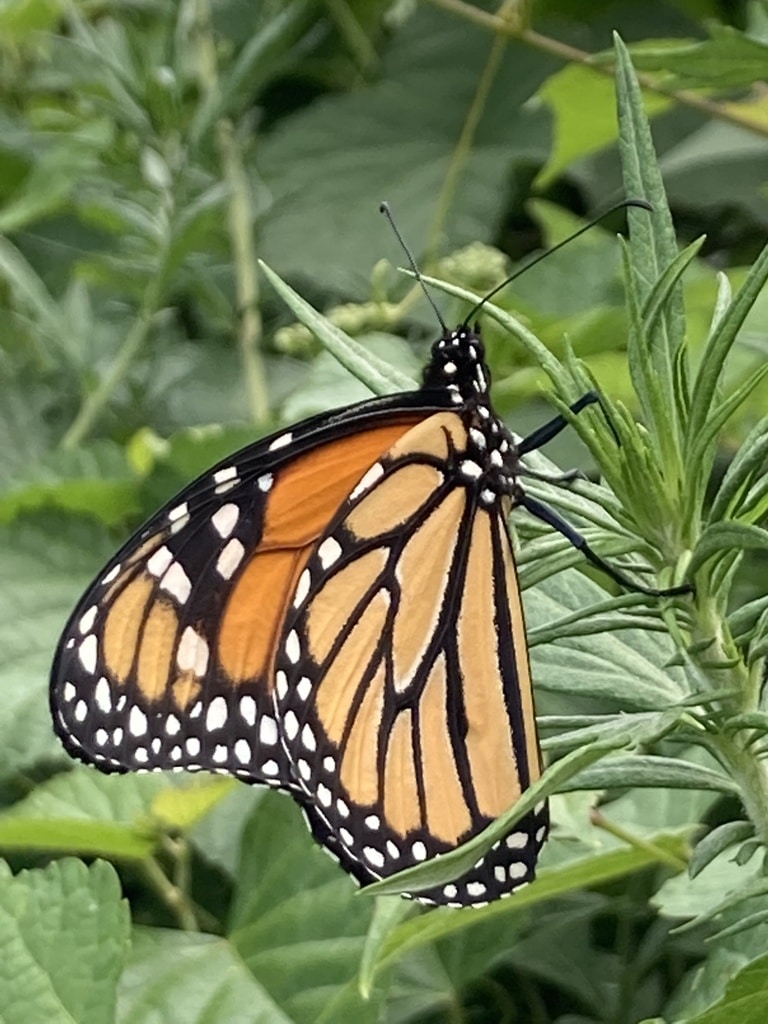
By Natural Areas Conservancy on July 22, 2025

 By Melissa Rosenthal, Community Engagement Coordinator
By Melissa Rosenthal, Community Engagement CoordinatorOur urban natural areas boast a plethora of wildflowers, many of which bloom throughout the hot summer months. These striking flowers can be found in upland forests, wetlands, meadows, street tree pits and even alongside highways! Not only are they valued for their visual appeal, but their pollen and nectar is a crucial foodsource to many of our native pollinators.
Read on below to learn about four summer wildflowers, their pollinators and where you can spot them in NYC!
Blooms from July to October
Where to spot: LaTourette Park, Cunningham Park, Pelham Bay Park
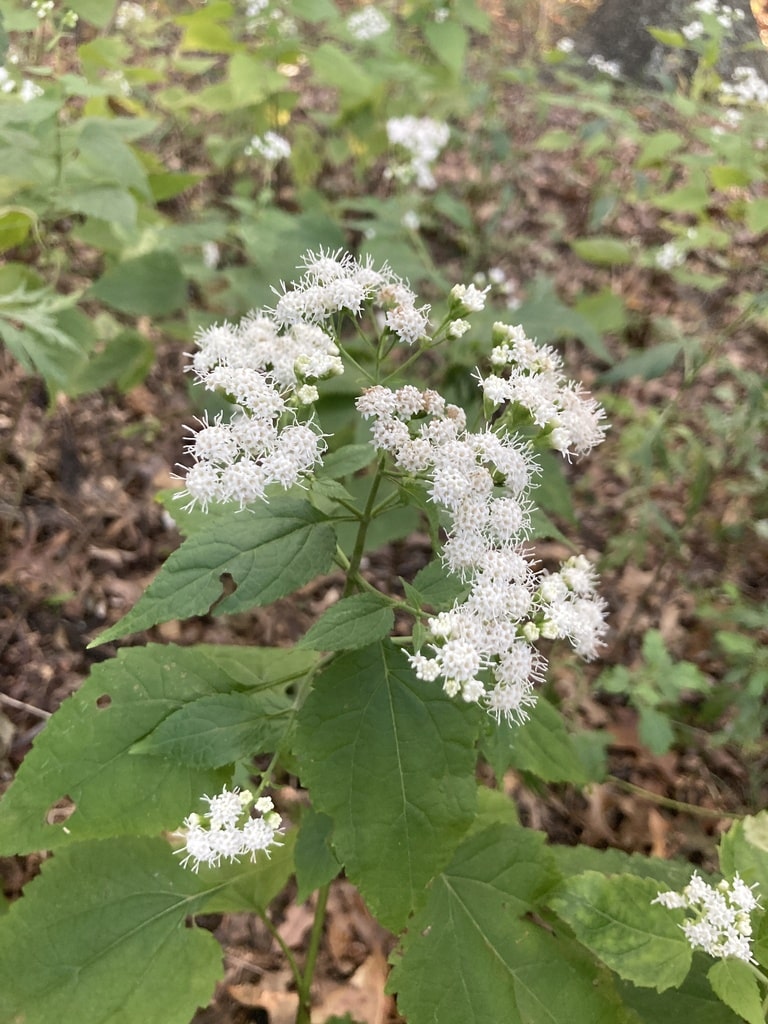
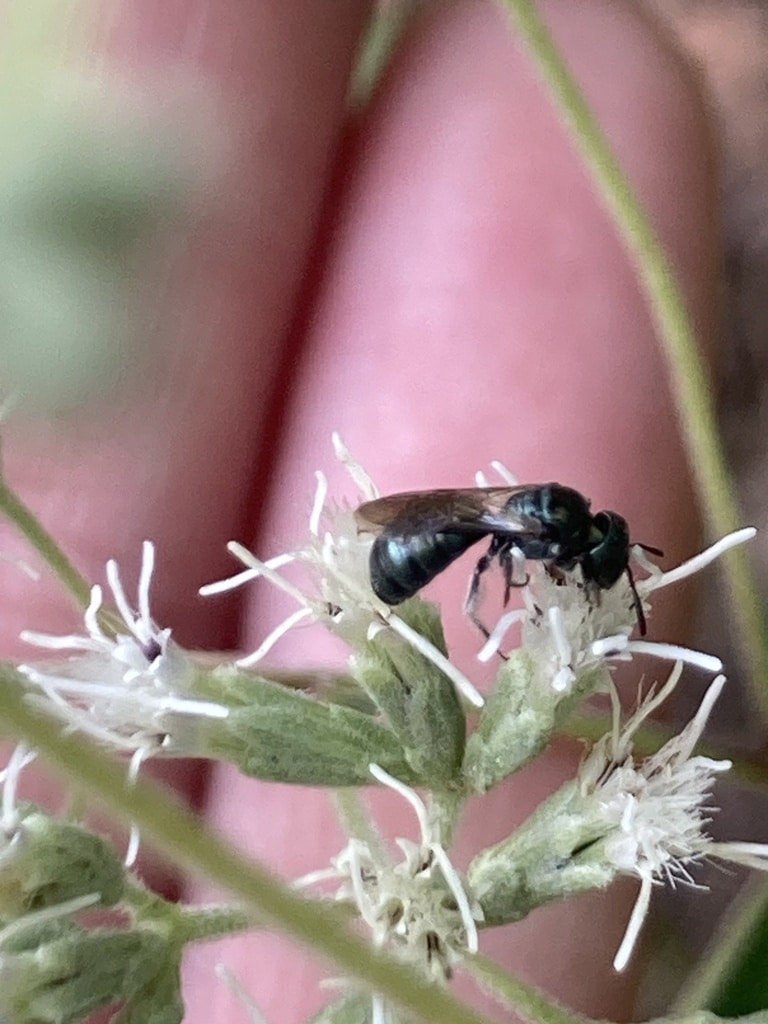
White snakeroot is found in upland, non-aquatic habitats and can grow up to 5ft tall. It has white disk flowers and the leaves are simple, toothed, opposite and oval in shape. The common name is derived from early settlers in North America who believed the rhizomes (roots) were beneficial to treating snakebites. However, white snakeroot is highly toxic and has caused fatalities from what is called ‘milk sickness’ due to people consuming the milk of dairy cattle who have eaten the plant.
White snakeroot has various pollinators including leaf-cutting bees, sweat bees, and flies. One of the most frequent pollinator visitors is the small carpenter bee. They are medium-sized, sparsely haired and have a dark, shiny and metallic appearance. Our native small carpenter bee is called Ceratina calcarata, commonly named the spurred carpenter bee. They utilize what is called ‘buzz pollination’. This consists of them using their powerful thoracic muscles to sonicate/vibrate the dry pollen grains out of the flower’s anthers.
Blooms from June to August
Where to spot: Soundview Park, Riverside Park, Kissena Park
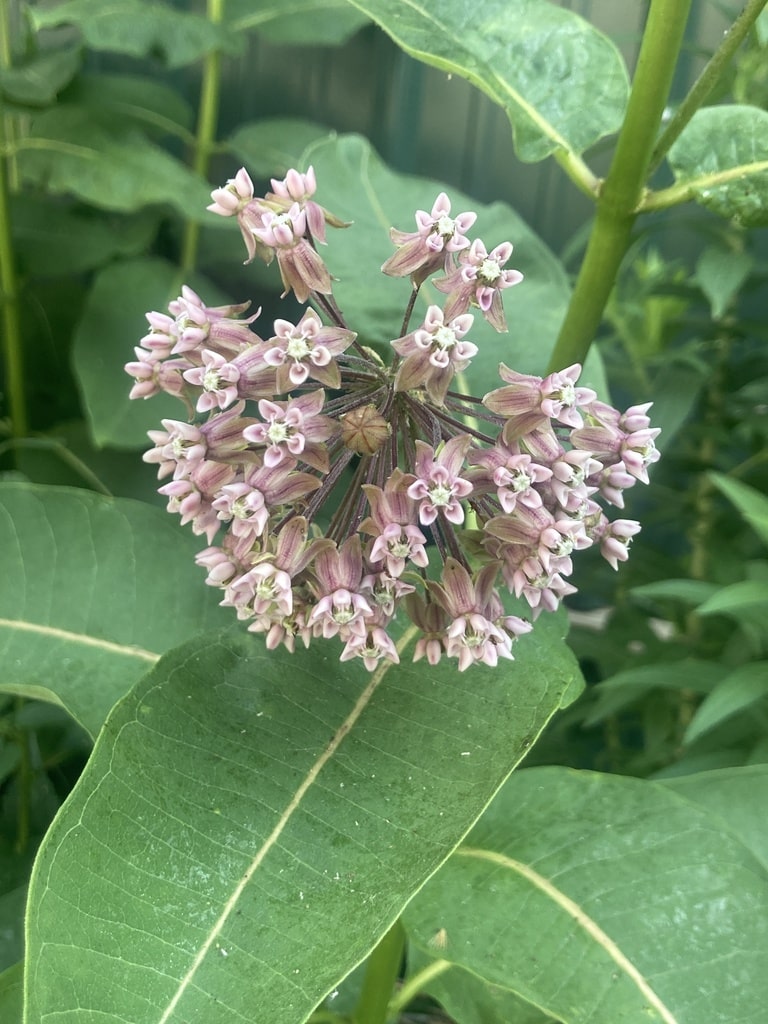
Common milkweed can be found in fields and on roadsides. Just as its name states, this flower can be rather weedy and, in the past, has been viewed as an aggressive plant that was often pulled from gardens. However, as awareness of its importance in the role of the declining population of monarch butterflies spread, this wildflower has been seen less as a pest and more as something to cultivate and protect. It can grow up to 6ft tall, the leaves are opposite, simple and with a lance-like shape. The flowers are pink to purple in color, with five petals fused into a cup.

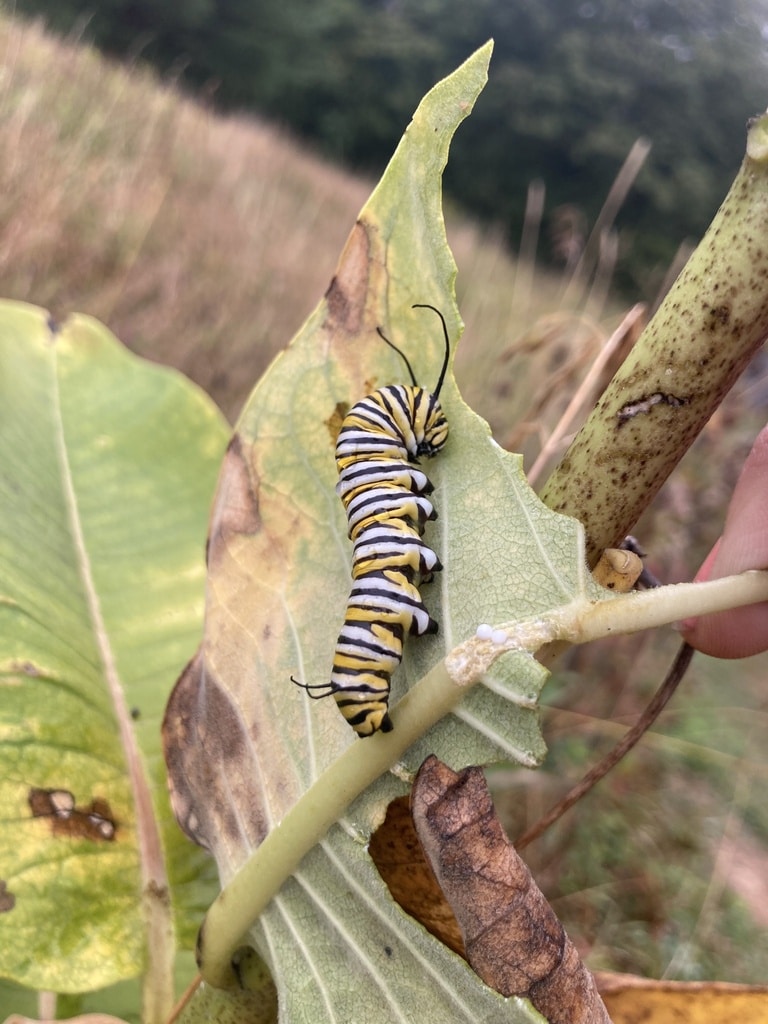
While common milkweed has many native pollinators, the insect most reliant on it is the monarch butterfly (Danaus plexippus). This is one of the only butterflies known to make two-way migrations similar to how birds do. Monarchs can’t overwinter in the north as they cannot tolerate the cooler temperatures so they use environmental cues to know when it is time to travel south for the winter. The flights of northeastern monarchs take them from New York to central Mexico and back again. During the summer breeding season, monarchs will mate and lay eggs on milkweeds as they journey north. Monarchs exclusively lay their eggs on milkweed plants and monarch caterpillars only feed from milkweed. The relationship between milkweed and monarchs comes down to the milky latex the plant produces. This sap contains compounds called cardiac glycosides which are toxic to other animals. Monarchs have a resistance to this toxin and as such they have a strong chemical defense against would-be predators.
Blooms from July to September
Where to spot: Van Cortlandt Park, Cloves Lake Park, Prospect Park
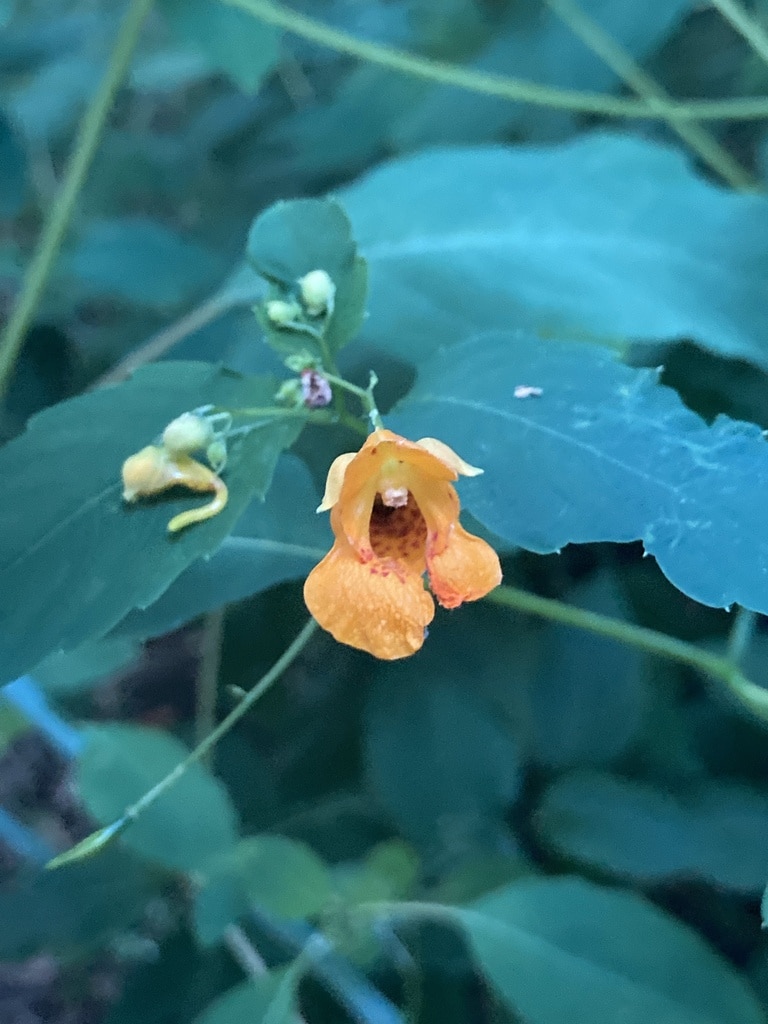
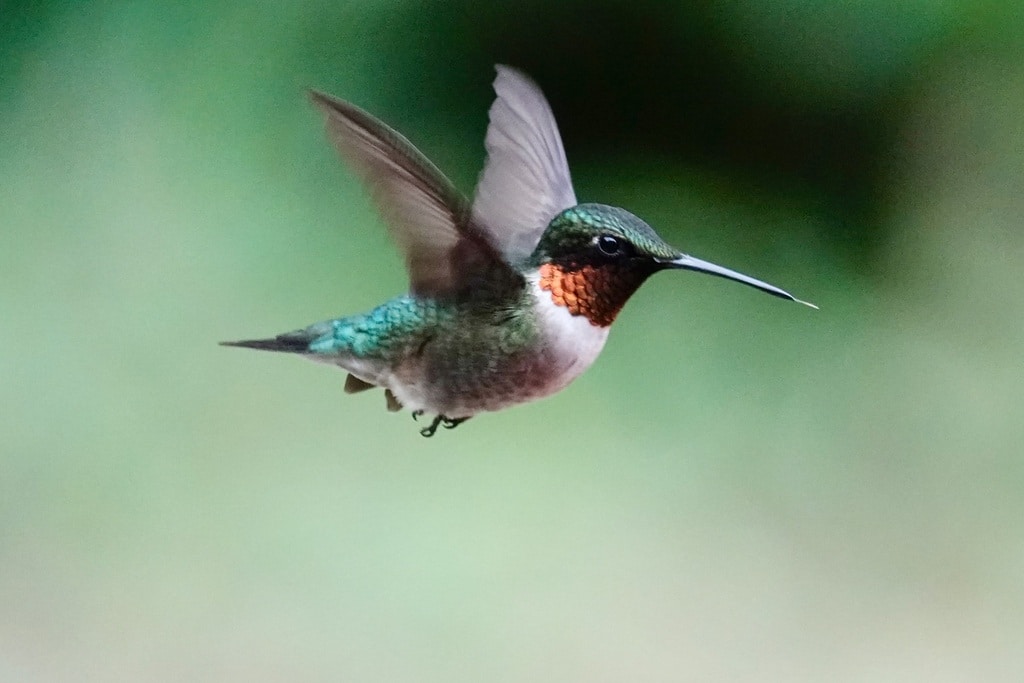
Photo credit: Louise Woodrich, iNaturalist
Jewelweed is found in the edges of wetlands and forests and can grow from 3-5ft tall. The leaves are simple, toothed, with an oval shape and a blue/green hue. The flowers are orange/yellow and often spotted with three-lobed petals. The clear sap from the stem of the plant can be used to relieve itchiness and irritation caused by poison ivy or insect bites. Jewelweed spreads their seeds through explosive dehiscence which is a mechanism that some plant species use to disperse their seeds. The plant has specialized tissue which stores mechanical energy, which is then transferred to the seeds, thus increasing their kinetic energy. When the seed pods of jewelweed are ripe, they burst open and fling the seeds up to 30 feet away from their parent plant.
The showy flower produces a plethora of nectar to lure potential pollinators. One such visitor is the ruby-throated hummingbird (Archilochus colubris), which pollinates over 30 plant species throughout North America. Hummingbirds will sip nectar using a rapid licking motion of their long tongues. In fact, they can even extend and retract their tongue 13 times per second. As they beat their wings over fifty times per second when hovering, they require a lot of energy. Consequently, they feed frequently which results in them visiting thousands of flowers a day. Many plants have evolved to attract hummingbirds in order to promote the transfer of pollen. Jewelweed in particular has flowers that dangle from a long stalk which causes it to move rather easily. The flowers’ movements assist in transferring pollen to the visiting hummingbirds, smearing pollen onto their beak, head and feathers. The orange color of jewelweed flowers also entices and attracts hummingbirds.
Blooms from August to October
Where to spot: Central Park, Willowbrook Park, Marine Park
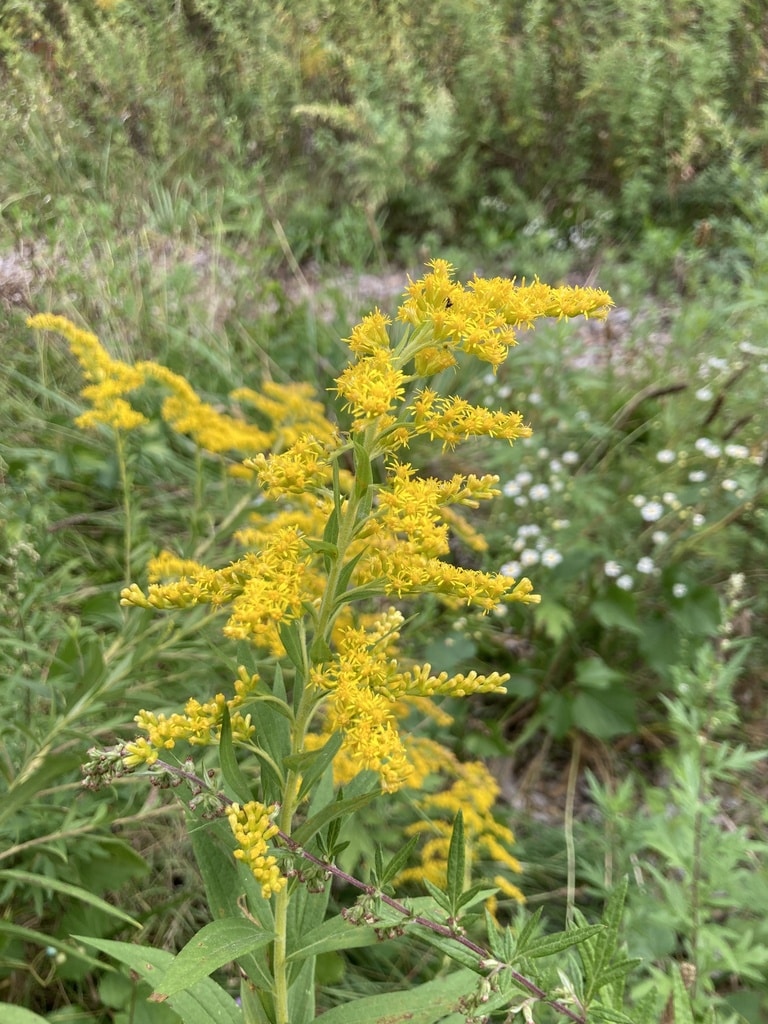
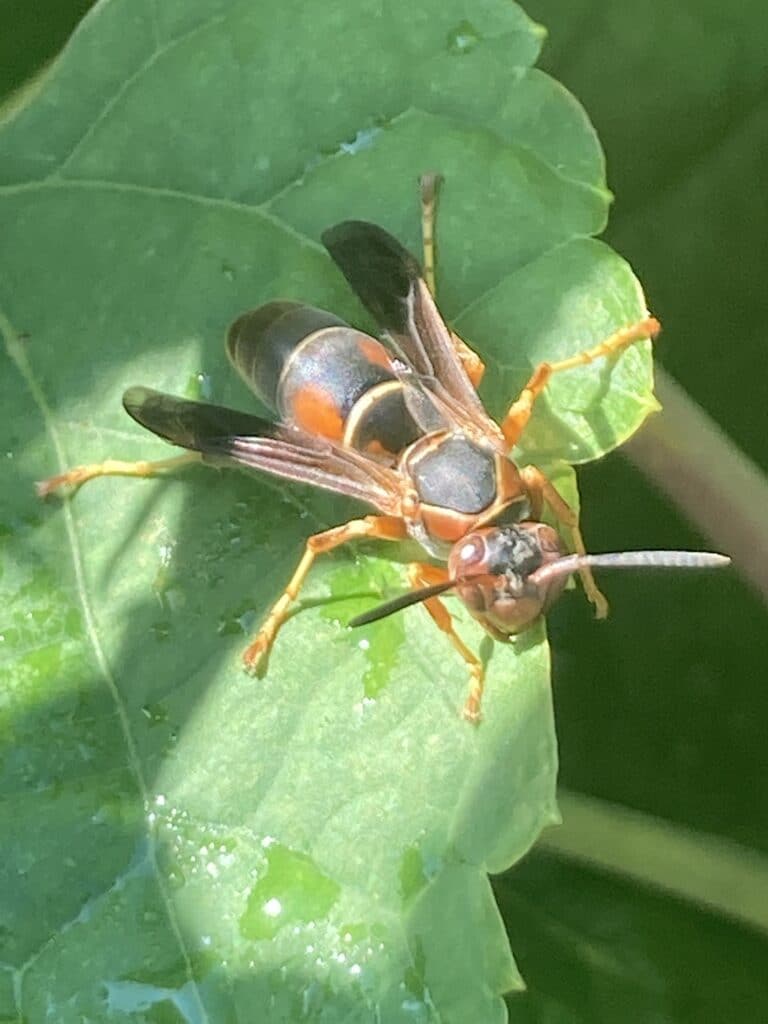
Goldenrod is found in man-made and disturbed areas as well as meadows and fields. It grows 2-4 ft tall and its leaves are simple, alternate, usually toothed and lance-like in shape. Goldenrod has disk flowers with yellow petals with each flowering stem having four or more flower heads on it. The plant grows via rhizomes and can also seed rather abundantly.
A frequent visitor to goldenrods are paper wasps, specifically the northern paper wasp (Polistes fuscatus) as they are attracted to yellow flowers. They feed on nectar for energy while they hunt as well as using the flowers as a hunting ground for small insects and prey. Their fine but dense hairs often collect pollen which is then transferred as they travel from flower to flower. Paper wasps are very intelligent and can recognize their fellow nestmates down to the individual based on markings on their abdomen or face.
The Natural Areas Conservancy will be hosting a guided hike at Pelham Bay Park led by myself and NAC staff. This is a great opportunity to view NYC’s diversity of wildflowers and their pollinators. Register here.